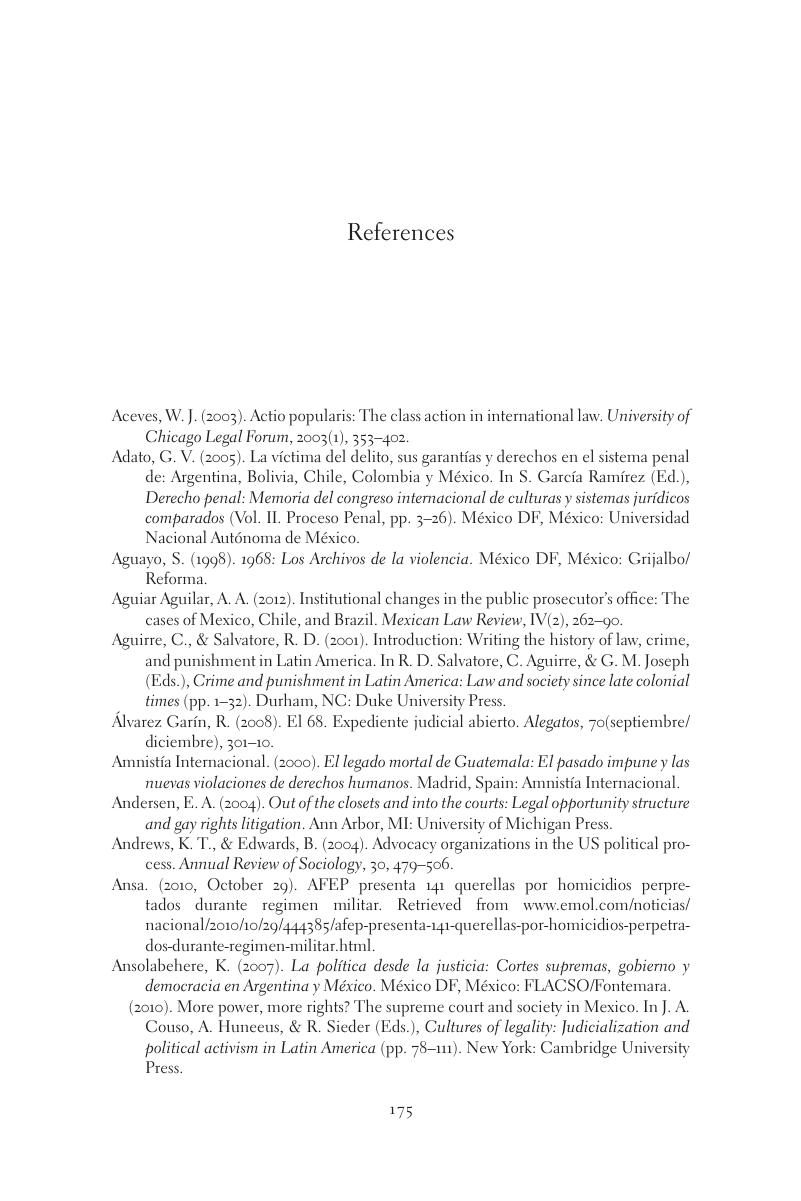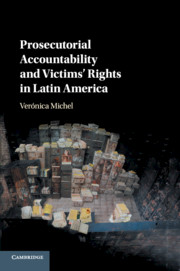Book contents
- Prosecutorial Accountability and Victims' Rights in Latin America
- Prosecutorial Accountability and Victims' Rights in Latin America
- Copyright page
- Dedication
- Contents
- Figures
- Tables
- Acknowledgments
- Introduction
- 1 Private Prosecution as an Accountability Tool
- 2 Private Prosecution as a Victim's Right in Latin America
- 3 David and Goliath
- 4 Against Oblivion
- 5 Discovering the Power of Rights
- Conclusions: Prosecutorial Accountability and Rule of Law from Below
- References
- Book part
- Glossary
- Index
- References
References
Published online by Cambridge University Press: 21 December 2017
- Prosecutorial Accountability and Victims' Rights in Latin America
- Prosecutorial Accountability and Victims' Rights in Latin America
- Copyright page
- Dedication
- Contents
- Figures
- Tables
- Acknowledgments
- Introduction
- 1 Private Prosecution as an Accountability Tool
- 2 Private Prosecution as a Victim's Right in Latin America
- 3 David and Goliath
- 4 Against Oblivion
- 5 Discovering the Power of Rights
- Conclusions: Prosecutorial Accountability and Rule of Law from Below
- References
- Book part
- Glossary
- Index
- References
Summary

- Type
- Chapter
- Information
- Publisher: Cambridge University PressPrint publication year: 2018



